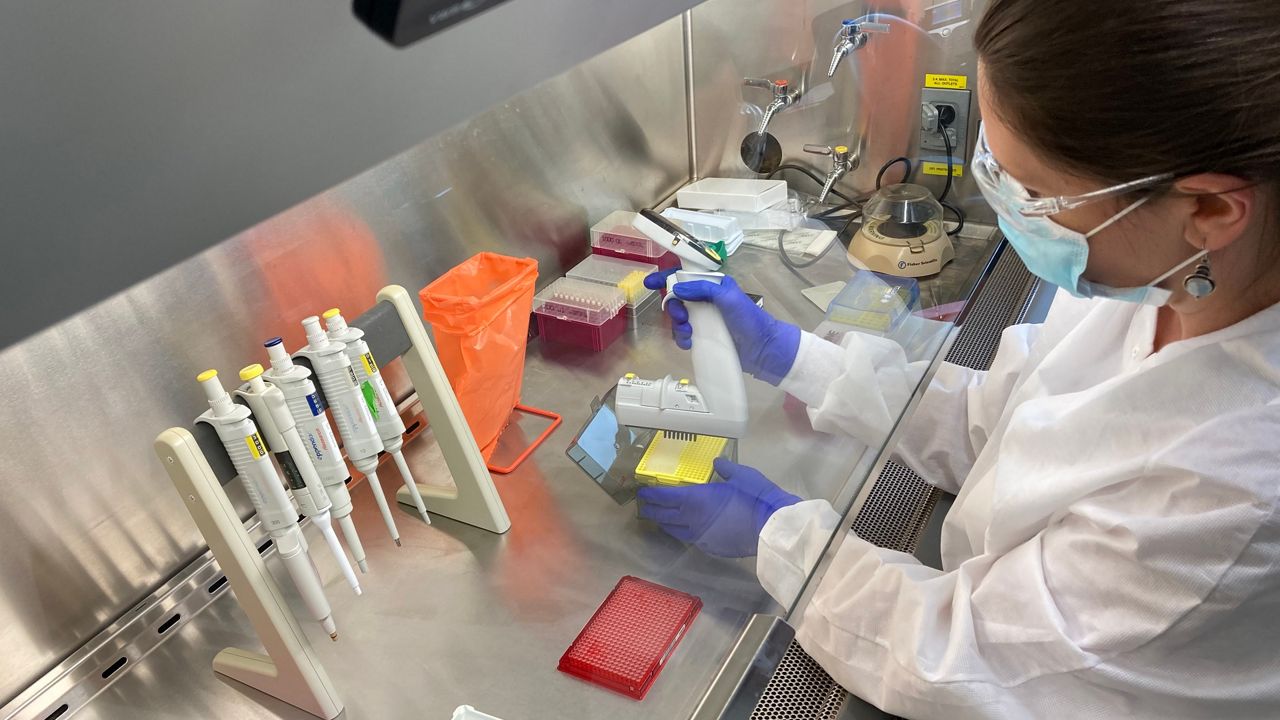COLUMBUS, Ohio — A Missouri-based company that developed a product called the Concentrating Pipette in 2012 began contracting with universities last year as they started to monitor for COVID-19 in the wastewater of dormitories.
What You Need To Know
- Public health labs are using sophisticated devices for wastewater surveillance
- Virus trends can be tracked by analyzing samples from sewage treatment plants
- Variants can also be monitored with wastewater surveillance, but it's expensive
Labs can use InnovaPrep's pipette product to concentrate samples for analysis from wastewater that's extremely diluted.
“Right away, we got lots of business for university testing all over the world, and then we started getting a lot of interest from other governments around the world like Australia and Canada and in Europe, and that really picked up and was getting going well ahead of United States public health,” said Ann Packingham, the company’s marketing and distribution director.
It took time, but public health agencies in the U.S. now recognize the value of population-level monitoring of the disease in wastewater, and labs all across the country are now conducting this type of surveillance.
This year, after new variants emerged at an unexpectedly fast pace, the federal government significantly increased its investment in the surveillance, hoping that by studying samples from sewage treatment sites, they could get an early indication of virus surges.
Dave Goad, senior scientist for InnovaPrep, said their product, which costs $14,500 for the instrument and about $18 per sample, allows laboratories to recover viruses from water samples where the virus is in very low abundance in a large volume of dirty water.
“The whole idea of the wastewater surveillance, it allows assessment of community infection levels several days before you actually have any clinical presentation of signs,” he said. “It's a really good indicator of infection across the community. Rather than relying on individual testing and things like that, it gives a kind of a big picture view.”
Using a product like InnovaPrep’s Concentrating Pipette is the first step in the wastewater surveillance process, Goad explained. For example, in Ohio, labs are using InnovaPrep’s product to concentrate the sample, then using kits from the German company Qiagen for PCR processes that extract the RNA nucleic acid target for SARS-CoV-2.
Goad said variants can be identified through sequencing of wastewater samples, but it’s expensive and not routine.
"It's actually pretty powerful because it allows detection of variants potentially before you see clinical presentation of these variants, because not all samples are sequenced,” he said.
Packingham said public health officials are getting a less reliable picture of virus trends from testing because many people are asymptomatic and because home testing, which often isn’t reported, has become so popular.
State labs are now using the wastewater data to guide decisions about what COVID-19 protocols to enforce or recommend.
“They're really trying to keep tabs on, you know, what to do about masking, what to do about kids and the elderly and the immunocompromised based on what's going on at a community level, and keeping track of the variants as they emerge because they emerge very quickly and spread very rapidly,” she said.



